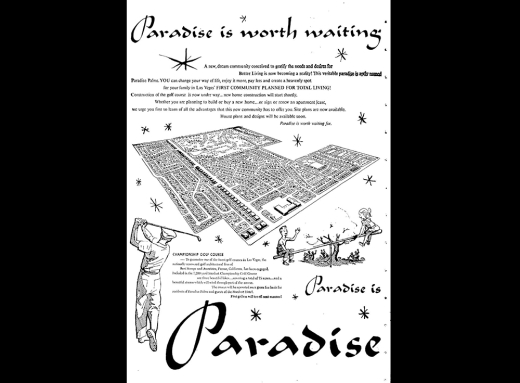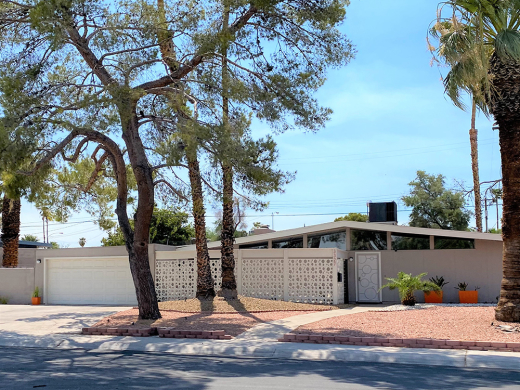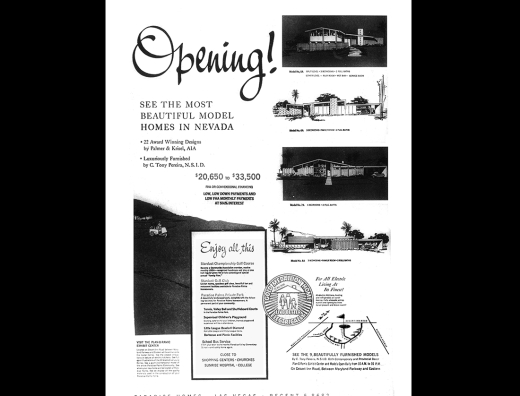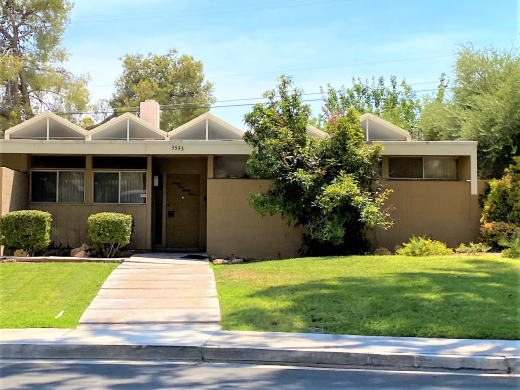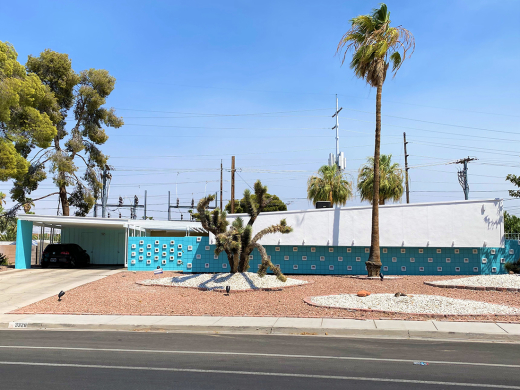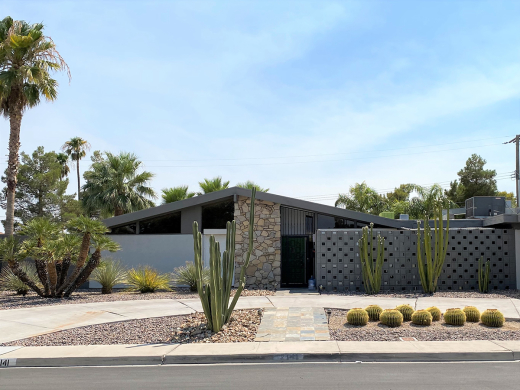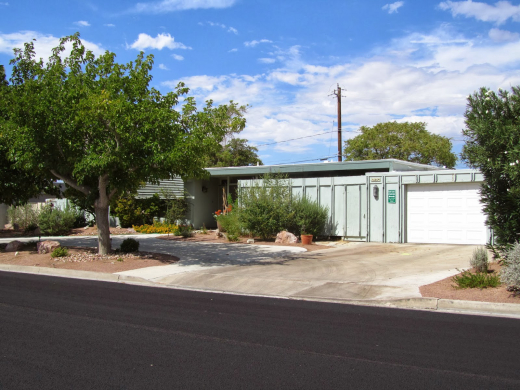The Other Las Vegas Part Four
A Paradise Worth Waiting For
by Dave Cornoyer
Due east of the Las Vegas strip lies one of the most well-known treasure troves of midcentury homes in Las Vegas: Paradise Palms. In 1960, fresh off their build of nearby Sunrise Hospital, local developers Irwin Molasky and Merv Adelson (who later in the decade would form Lorimar Television Productions) formed Paradise Development Corporation and Paradise Homes, with the intention of opening up Las Vegas’ Paradise Valley east of Maryland Parkway along Desert Inn Road for development and creating a wide-range of upscale housing on a 720-acre plot of vacant desert. The duo would build what is widely regarded as the first master planned community in Las Vegas, complete with schools, shopping, housing and recreation. At the heart of the community was the Stardust Golf and Country Club (later becoming the Sahara, Hilton, and today the Las Vegas National Golf Club). Land for an elementary school was set aside at the center of the community, while strips along Desert Inn Road were reserved for apartments and offices, and acreage along Maryland Parkway was planned for Nevada’s first regional indoor shopping center, the Parkway (named Boulevard at opening) mall.

